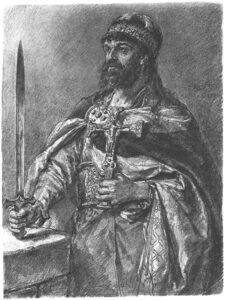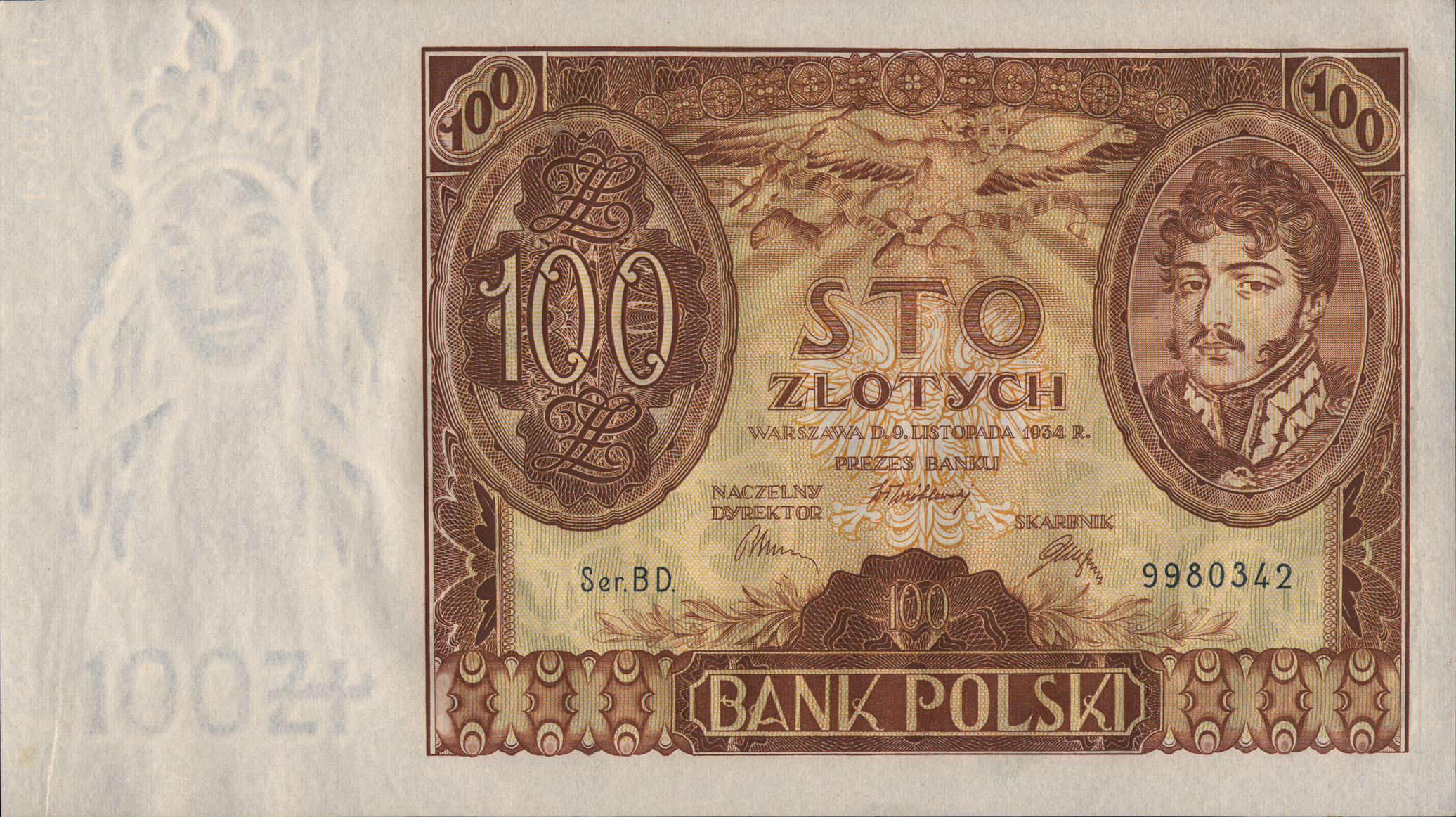The beginnings of the Polish state have received a lot of attention, and this period still raises many questions and doubts. How did people live in Poland a thousand years ago? How could Krakow become the cradle of the Piast state? What was the role of Mieszko I’s baptism? And what do we actually know about the first historical ruler of Poland? These issues are discussed by archaeologist and author of the book “The Dawn of the Polish State” Professor Andrzej Buko.
polishhistory: Recent years have brought many studies on the beginnings of Polish statehood. Most often, however, this issue is presented in the context of historical or, more broadly, interdisciplinary research. What is the approach of modern archeology to this?
Andrzej Buko: Indeed, there are, surprisingly, very few studies presenting the origins of the Polish state from an archaeological perspective. A breakthrough was the thorough program of excavations nitiated just after the Second World War, and undertaken in over forty towns throughout the country. The program was related to the upcoming millennium jubilee of the Polish state. However, historians took the lead in this, focusing mainly on the analysis of written sources. Archaeologists conducting fieldwork remained on the outskirts of these activities. If there were any studies made by them, they were small contributions, mainly aimed at popularizing particular discoveries. We had to wait for more serious monographs.
In the meantime, several significant publications have been published taking into account the achievements of archeology. But most of them are very specialized, and thus targeted at a narrow audience. In turn, other works almost completely lack the issues of the eastern regions – eastern Mazovia and eastern Małopolska. I decided to include this in my book: it is admittedly of a moderate size, but it covers all the regions.

Compared to available publications, it is also distinguished by the fact that it focuses on things. It is quite surprising that so far they have not been fully examined in research on the origins of the Polish state. What can they tell us about the birth of our statehood?
Things (findings), understood as material evidence of the past, can be treated in various ways. Initially, they were perceived as an element of material culture, e.g. tools or ornaments, but over time, more and more emphasis was put on other meanings, such as symbolic ones. However, it should be remembered that they should be examined in relation to the man who produced and used them. Many things that we find during excavations make sense and provide us with appropriate knowledge only when we combine them with a human.
Take a sword, for example. Generally speaking, it is an object that can be described by its physical dimensions, such as length, width, and component parts, as well as the workshop where it was made, etc. However, when combined with a warrior, it takes on a different meaning: it becomes a tool to inflict death, but it can also be a sign of power or prestige. Similarly, for example, with sunken huts. Objectively, were residential or farm buildings of defined forms and dimensions. Meanwhile, in combination with humans, they show how people used to live, how they arranged them and lived in them, what they kept there, and what communities they created within the building. Thus people and things are entanglemented. In other words: we have no ancestors who could tell us about the past, but we have what they left behind. Sometimes material evidence of their presence speak to us more strongly than written sources.

You could say that they also open up a new research perspective. When talking about the beginnings of Polish state, we usually focus on broader mechanisms and processes, and findings show us the everyday life of people – how they lived, what they ate, what they suffered from. What can we say about how they lived on Polish lands a thousand years ago?
It is the natural sciences that mainly provide answer to these questions. The study of macro remains or plant pollen allows us to determine what was grown, and what was eaten. In addition, there are stable isotope analyses, which, through the study of human bones, provide knowledge about whether people were nourished mainly with plant or animal proteins, or whether ancient elites ate differently than the common population buried in so-called flat graves, and how the diets of men and women differed. On this basis, we can, inter alia, state that in the early Middle Ages, the population of the Polish lands – mainly those of elite society – ate pork most often, that people suffered from diseases known to us today, or that the average life expectancy did not exceed 40-45 years. And this is just the beginning! The research perspectives here are extremely broad.
Let’s move on to the very mechanisms of the formation of the Piast state. What was the process of unifying the Polish lands in comparison to similar processes taking place throughout Central and Eastern Europe?
It was quite similar – in the 10th century the processes that led to the emergence of new countries on the map of Central and Eastern Europe were initiated. In the lands of the future Polish state a large part of these activities was played by the local leadership group – the clan or family – which, using previously developed practices and achievements, began to consolidate various territories of Polish lands into a whole.
The factor that played an important role in these processes were the trade routes, which had been intensively developed since the 9th century. Some of them ran through the Polish lands – one of them led from Regensburg through to Prague, and Krakow to Kiev. In turn, the Oder and the Vistula-Bug river routes led from the north to the south. There was a tremendous flow of goods through these routes. Colloquially speaking: whoever was smart enough was able to control this trade and derive tangible benefits from it. In Poland, favorable conditions for this existed, inter alia, in the Greater Poland region. Why there? This region turned out to be the most effective in controlling these routes, and the least exposed to external threat.
On the other hand, looking at politics, not much happened in Pomerania or Mazovia at that time, and the situation on the Polish-Rus border was not very stable. The state-formation impulse, which appeared in Lesser Poland in the 9th century, expired before the mid-10th century, and there is no evidence of similar initiatives in the 9th century in Silesia either. The situation was different in Greater Poland , where, at the beginning of the 10th century, the Piast family grew in power, and the first historical ruler – Mieszko I appeared. He knew perfectly well that in order to benefit from the exchange of goods by controlling trade , one must have a group of supporters, preferably an armed retinue , or even better – something organized like a state apparatus. This realization probably caused the state-building processes to accelerate significantly there.

As for the impulse from Lesser Poland – you state in your book that in the 9th century, many state-formation processes were activated in the land Krakow, which also fits in with the disputes over the Lesser Poland and Greater Poland origins of the Polish state that went on for years. Which lands should we consider as the cradle of the Polish state?
It is commonly perceived as Greater Poland. But if we look from the archaeological perspective, therefore, through the prism of things, it is not difficult to notice that already in the 9th century, many things and phenomena unknown in Greater Poland had appeared in Lesser Poland, and at the same time, made Krakow a unique center. It suffices to mention the monumental mounds still preserved in the city’s landscape – Krakus and Wanda – have no analogies within a radius of almost a thousand kilometers. Or, a huge hrivna hoard, numbering thousands of copies? The ax-like hryvnas (commodity money) – the only of its kind in Europe. According to some authors, they constitute a material evidence to the fiscal system at that time, functioning in the Krakow region as early as the 9th century. It is also worth mentioning that so-called white ceramics in Krakow was unique pottery production In this part of Europe -, or the great strongholds, which are the hallmark of Krakow’s center in the pre-state era. Added to this is Krakow’s tale about the local dynastic tradition – the legend of Krak and Wanda.
All this indicates that in the 9th century, something unique for the future Polish state began in the region of Krakow. Unfortunately, at some point this great achievement was squandered, which may have been largely related to the collapse of the Great Moravian state, the most culturally influential neighbor of southern Poland. Moreover, the Krakow center was oriented mainly towards its own region. There are no records of attempts to subjugate other lands. Meanwhile, the representatives of the Greater Poland family clans were more expansive and experienced – and with these conquests they became leaders among others.
What was the character of the unification process – was it only by conquest or was it also peaceful?
First of all, it was a conquest that began in the times of Mieszko’s father. In the book, I mention a mysterious network of fortified settlements recognized by scholars as Tornow-Klenica – located in Lower Lusatia, Lower Silesia and south-west Greater Poland. They were all similar: small, round in shape and – most importantly – exceptionally fortified. They were probably the inventionf new social structures, the seeds of leader organizations that tried to build their own state in the Slavic territories, but failed. These strongholds were built in the middle of the 9th century, but already in the 20s of the 10th century they were destroyed, or more precisely conquered and divided between two political entities – the Otton dynasty and the Piast family ascending to the European stage, represented by Siemomysł (?) – Mieszko’s I father.
These are the first surviving evidence of the conquest. Gdańsk Pomerania, Silesia, the Sandomierz region and the Lesser Poland region were probably attached to the Piast “cradle”. As for Krakow, its seizure took place – interestingly – without conquest, through a quiet, peaceful revolution. It is possible that the same was true for Mazovia.

At what point can we talk about the transformation of Greater Poland into the territorial state of the Piasts?
It seems that this process happened at the end of the 10th century. The Dagome iudex created at that time is a document known from the preserved register under this name, which Mieszko I gave the Polish state, known there as Civitas Schinesghe, under the protection of the Holy See. It included the borders of Poland. Interestingly, they largely coincide with the present shape of the state, so it is the closest to the territory of the Piasts a thousand years ago. Since the end of the first Piast monarchy, that is, the invasion of Břetyslaw in 1039, successive Polish rulersought mainly to restore these borders. Of course, with different results. Boleslaw the Brave tried to expand them and create an imperial state, for this purpose he fought almost on all fronts – for Milsko and Lusatia, for the Cherven strongholds, and at one point he even took Prague, taking on the title of Czech prince. Thus he wanted to make Poland an empire, but he did not succeed. His father’s legacy turned out to be the most significant in this regard.
Researchers have long argued about the origin of the Piasts – some point to the local origin of the dynasty, others consider them to be Normans or Moravians. Does archeology allow us to resolve this dispute unequivocally?
Yes, there has been discussion for years as to whether the origins of the Polish state are endogenous, i.e. whether the proverbial spark came from the lands of present-day Poland, or whether it was exogenous, and the state founded by elites who came to these lands from outside. Some researchers support this view, most likely those from Scandinavia. Authors from outside refer to books that are still very popular and claim the Lechite, i.e. Germanic, beginnings of Poland. However, these theories are unlikely. Theories defining Mieszko I as Scandinavian do not find any justification in the available source material. It is true, however, that, like other rulers of this part of Europe, he hired Scandinavian warriors as well as those from the West and East of Europe. However, it is difficult to ascribe any foreign roots to him.

What do we actually know about Mieszko I – the first historical ruler of Poland?
Unfortunately, the remains of Mieszko I have not survived, so it is difficult to determine what he looked like or where he came from – which is possible through genetic or isotope analyses. Therefore, we can only judge it by deeds. On this basis, Mieszko appears primarily as a fighter and skillful diplomat, surrounding himself with people who had extensive knowledge about the situation in Europe, and who helped him build the Polish state. He was also the creator of a professional army, he sowed the seeds of a territorial state and the foundations of the Church. A statesman, a leader, and the one who successfully carried out his religious conversion – he undoubtedly proved to be an outstanding and far-sighted figure.
The baptism of Mieszko I in 966 is commonly regarded as the baptism of Poland and a fundamental event in its history. Some, however, recognize that today the importance of this fact is overestimated and the turning point is rather the beginning of the second millennium, i.e. the times of Bolesław the Brave and his successors. So what was the meaning of Mieszko I’s baptism?
The year 966 is only a formal date. “Baptism of Poland” is definitely a conventional term – in fact it was the baptism of the ruler and his court. Although this event initiated Christianization, it was a process extended over time – in many countries lasting even several centuries. In Eastern Mazovia (present-day Podlasie), there were probably some settlements in the 16th century, the population of which buried their dead just like several hundred years earlier – in burial mounds.
Certainly, the baptism of Mieszko and his entourage raised the status of the Piast state, legitimized its power in the European Christianitas community, thus making it an equal partner in relations with other European rulers. Thanks to him, Poland became part of the Christian world, which was the legacy of the great Roman empire, but also an active subject on the European scene at that time. The baptism of Mieszko I was therefore the proverbial pebble that caused the avalanche. It can be considered a symbol of the Christianization of Poland, but also an important factor in the process of building the identity of Poland and Poles over the centuries.
Interviewer: Natalia Pochroń
Translation: Alicja Rose





